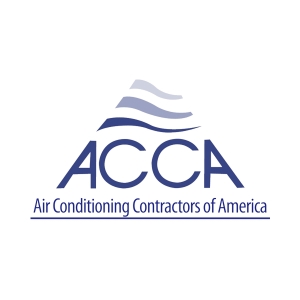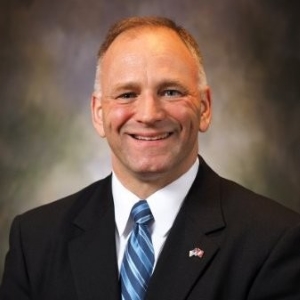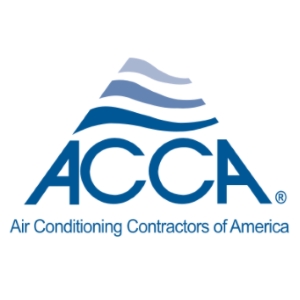Air Conditioning Contractors of America Association, Inc (ACCA) - Experts & Thought Leaders
Latest Air Conditioning Contractors of America Association, Inc (ACCA) news & announcements
A-Gas, a world pioneer in environmentally responsible lifecycle refrigerant management, is proud to announce its partnership with The Air Conditioning Contractors of America (ACCA) through its participation in ACCA’s Strategic Partner Program. As a pioneer in the HVACR industry, A-Gas plays a critical role in promoting environmental responsibility across the HVACR industry. From recovery and reclamation to responsible destruction, A-Gas offers sustainable solutions that prevent refrigerants from being released into the atmosphere. Strategic partner program A-Gas helps HVACR professionals safely handle refrigerants, extend their usable life “We’re thrilled to expand our strategic partner program with A-Gas,” said Barton James, ACCA President and CEO. He adds, “Their expertise and leadership in refrigerant lifecycle management helps contractors meet regulatory requirements and contribute to a stronger future for our industry.” Through its advanced technologies and services, A-Gas helps HVACR professionals safely handle refrigerants, extend their usable life, and dispose of them responsibly when reclamation is not possible. Partnering with ACCA "At A-Gas, we’re proud to support contractors who are on the front lines keeping us cool and safe every day," said Hector Miravete, SVP of Commercial Operations, A-Gas Americas. He adds, "Partnering with ACCA allows us to deepen our collaboration with the industry and ensure that contractors have access to the tools, knowledge, and support they need to safely manage refrigerants while growing their businesses." ACCA’s Strategic Partner Program brings together industry leaders committed to supporting contractors and advancing the HVACR profession.
A-Gas, a global pioneer in environmentally responsible lifecycle refrigerant management, is proud to announce its partnership with The Air Conditioning Contractors of America (ACCA) through its participation in ACCA’s Strategic Partner Program. As a pioneer in the HVACR industry, A-Gas plays a critical role in promoting environmental responsibility across the HVACR industry. From recovery and reclamation to responsible destruction, A-Gas offers sustainable solutions that prevent refrigerants from being released into the atmosphere. Advanced technologies and services A-Gas helps HVACR professionals safely handle refrigerants, extend their usable life "We’re thrilled to expand our strategic partner program with A-Gas," said Barton James, ACCA President and CEO, adding "Their expertise and leadership in refrigerant lifecycle management helps contractors meet regulatory requirements and contribute to a stronger future for our industry." Through its advanced technologies and services, A-Gas helps HVACR professionals safely handle refrigerants, extend their usable life, and dispose of them responsibly when reclamation is not possible. Safely manage refrigerants "At A-Gas, we’re proud to support contractors who are on the front lines keeping us cool and safe every day," said Hector Miravete, SVP of Commercial Operations, A-Gas Americas. Hector Miravete adds, "Partnering with ACCA allows us to deepen our collaboration with the industry and ensure that contractors have access to the tools, knowledge, and support they need to safely manage refrigerants while growing their businesses." ACCA’s Strategic Partner Program brings together industry pioneers committed to supporting contractors and advancing the HVACR profession.
The Fair Labor Standards Act (FLSA), which establishes things like minimum wage, overtime pay, youth employment standards, and recordkeeping, dates back to the 1930s. Much has changed in the working world since then. For example, due to the worldwide labor shortage, minimum wage isn’t an issue the way it once was — especially in the HVAC industry. Increased operational costs “Overtime, on the other hand, continues to be a major challenge for [HVAC contractors] employers, and therefore an issue that comes before the various administrations as they take office,” said Brooke Duncan, labor and employment lawyer. “Many contractors have expressed concern about the increased operational costs and the additional burden of having to make changes to comply with the new regulations,” said Kate Wessels, vice president of communications, marketing, and partnerships, ACCA. Minimum salary thresholds The rule, which expands overtime protections, increases the minimum salary thresholds Recently, the Department of Labor (DOL) released its final overtime rule: Defining and Delimiting the Exemptions for Executive, Administrative, Professional, Outside Sales, and Computer Employees, effective July 2024. The rule, which expands overtime protections, increases the minimum salary thresholds required to exempt a salaried bona fide executive, administrative, or professional employee (EAP) from federal overtime pay requirements — which are currently in place to ensure that employees who work more than 40 hours a week are compensated 1.5 time the regular amount they are normally paid. Annual compensation requirement In other words: If an HVAC contractor has employees who used to be exempt from overtime rules but are below the new threshold, they’ll need to either be paid overtime or given a raise so they’re once again exempt. The increase in salary threshold has the biggest impact to HVAC contractors, as the final rule increases the standard salary level for exemption, and the total annual compensation requirement for Highly Compensated Employees (HCEs). New overtime rule The response to the new overtime rule from ACCA members in particular has been mixed The response to the new overtime rule from ACCA members in particular has been mixed, according to Kate Wessels, vice president of communications, marketing, and partnerships at the Air Conditioning Contractors of America (ACCA). “Many contractors have expressed concern about the increased operational costs and the additional burden of having to make changes to comply with the new regulations,” Wessels said. “Smaller contractors, in particular, are worried about the impact on their profitability and the potential need to pass on some of these costs to customers, which could affect their competitiveness.” This huge increase in salary for exempt employees does mean that more HVAC employees would be eligible for overtime, resulting in an increase of labor costs for HVAC businesses that in turn, affects the bottom line. Standard salary threshold “It's worth mentioning that these kinds of changes that come out of federal agencies are driven by politics … It is worth knowing that the agencies that deal with workplace, such as the Department of Labor, very much do reflect the political philosophy of whoever's occupying the White House,” Duncan said. These employees must also satisfy the duties tests that define what constitutes an EAP employee These employees must also satisfy the duties tests that define what constitutes an EAP employee. These duties tests are not affected by the new overtime rule. The rule increases the standard salary threshold for those exempt EAP employees from its current pay of $684/week ($35,568 annually) to $844/week ($43,888 annually), starting on July 1, 2024. The next increase goes into effect on January 1, 2025, and will increase the threshold for those employees to $1,128/week ($58,656 annually). Determining new salary levels On July 1, 2024, the HCE total annual compensation threshold increases from $107,432 annually (including at least $684/week paid on a salary or fee basis) to $132,964 per year (including at least $844/week paid on a salary or fee basis). On January 1, 2025, the requirement will increase to $151,164 per year (including at least $1,128/week paid on a salary or fee basis). But wait — there’s more. Starting July 1, 2027, salary thresholds will update every three years, by applying up-to-date wage data to determine new salary levels. Implications for HVAC Businesses This new overtime rule has huge impacts on both small and large HVAC businesses This new overtime rule has huge impacts on both small and large HVAC businesses. After all, it does mean the potential increase of a number of employee salaries, or paying them overtime. “For small business owners, the primary concern is the potential increase in labor costs,” said Wessels. “Small businesses often operate with tighter margins, and the requirement to pay overtime to a broader category of employees might strain their financial resources.” Depending on the state of a small HVAC business, this could lead to difficult decisions regarding reducing employee hours or raising service prices in order to adjust to any increased salaries, or even reducing services offered. Small HVAC business “Larger HVAC businesses, while potentially more financially resilient, will still face increased labor costs,” Wessels said. “However, they might be better positioned to absorb these costs due to their larger revenue streams and more substantial financial reserves. They may also have more resources to invest in efficiency-improving technologies and processes that can offset some of the increased labor costs.” With less than a month to prepare for these increases, any and all HVAC contractors need to know exactly what (EAP) employees are getting that salary bump — or getting paid overtime. “There are two aspects to what constitutes a salaried and exempt [EAP] employee,” Duncan said. “A salaried, exempt employee is someone who receives a guaranteed salary and whose duties qualified them to be paid a guaranteed salary as opposed to being paid by the hour.” Minimum specified amount The amount of salary paid must meet a minimum specified amount Non-exempt employees are the opposite — those employees who are hourly workers and whose duties do not qualify as exempt, and who are paid hourly (at least minimum wage) and receive overtime. According to the Federal Register, “Since 1940s, the regulations implementing the EAP exemption have generally required that each of the following three tests must be met: (1) the employee must be paid a predetermined and fixed salary that is not subject to reduction because of variations in the quality or quantity of work performed (the salary basis test); (2) the amount of salary paid must meet a minimum specified amount (the salary level test); and (3) the employee's job duties must primarily involve executive, administrative, or professional duties as defined by the regulations (the duties test)." Overtime pay requirements The final rule updates and revises the regulations issued under section 13(a)(1) — included in the original FLSA Act of 1938 — implementing the exemption, often described as the “white-collar” exemption, from minimum wage and overtime pay requirements for EAP employees (as those terms are defined in the Department’s regulations at 29 CFR part 541). The final rule updates and revises the regulations issued under section 13(a)(1) “The duties tests have not changed … What has changed is the required minimum salaries [for EAP employees], and that’s really where [HVAC] employers can get into a jam,” Duncan said. The three employee exemption categories — executive, administrative, and professional — have salaries that are paid on a regular basis of a predetermined amount that cannot be reduced because of variations in the quantity or quality of the employee’s work. Executive employees are those whose primary role is management. Great deal of consideration “And the easiest definition for what constitutes management is that the individual customarily and regularly directs the work of two or more other [full-time] employees,” Duncan said. Someone in this position also has the authority to hire or fire other employees, or their suggestions are given a great deal of consideration. Often times those decisions are reserved for the very top of the business, like the owners. “The Department of Labor does recognize that, meaning that even if the [executive employee] is not unilaterally making the decisions — if her or his recommendations are given great weight — then that person may qualify for the executive exemption along with the [increased] salary,” Duncan said. Recommending HVAC contractors HVAC business owners might be forced to reassess staffing schedules in order to comply with this new rule To prepare for this rule change and the adaptations to come, HVAC contractors need to take a couple key steps. For starters, they’ll have to review and possibly adjust their budgets and staffing plans, implement new management techniques, communicate with their employees, and then some. To mitigate risks, Wessels recommended that HVAC contractors conduct a thorough review of staffing needs and schedules to minimize overtime where possible. Since many technicians are already working overtime, especially in peak seasons, HVAC business owners might be forced to reassess staffing schedules in order to comply with this new rule (ensuring they accurately track hours worked), while never missing a beat with customers. Consistently working overtime “This might involve hiring additional staff or redistributing workloads to ensure that no single employee is consistently working overtime,” Wessels said. According to the Heating, Air-conditioning & Refrigeration Distributors International (HARDI), employers will have to review and adjust their payroll practices to ensure compliance, which may involve salary adjustments or employee reclassification. To do this, HVAC contractors will have to take the appropriate measures to thoroughly track employee hours. Mitigating potential risks “Invest in time-tracking and management tools to monitor employees' hours more accurately,” Wessels said. “This can help in ensuring compliance with the rule and identifying patterns where overtime is most frequent.” And failure to comply won’t fare well for HVAC contractors. “The DOL emphasizes strict compliance with the updated salary thresholds,” according to HARDI. Therefore, HVAC contractors should maintain accurate records to conduct thorough audits in order to avoid any potential penalties; and then, if needed, promptly address discrepancies. It comes down to mitigating potential risks of the new rule. These reviews don’t stop at employee hours. The potential financial impacts take the same amount of effort. Forecasting potential changes If contractors want to adapt smoothly to changes, they have to keep their people in their loop “Prepare for the financial impact by reviewing budgets and forecasting potential changes in labor costs,” Wessels said. “Consider adjusting pricing strategies or finding other areas where costs can be reduced without compromising service quality.” Like arguably every aspect of the HVAC industry, communication is key. If contractors want to adapt smoothly to changes, they have to keep their people in their loop. “Maintain open lines of communication with employees about the changes and how the business plans to comply with the new rule,” Wessels said. “Transparency can help in managing expectations and maintaining morale.” Compromising service quality With any big change comes a rise in complaints. The new overtime rule is no exception. For contractors seeking a peace of mind through professional advice, they can and should consult with the necessary experts. “Consult with human relations (HR) professionals or legal experts to ensure full compliance with the new regulations and to understand any exemptions or special provisions that may apply to your business,” Wessels said.
Insights & Opinions from thought leaders at Air Conditioning Contractors of America Association, Inc (ACCA)
As HVAC professionals know, the heating and cooling industry is undergoing a transition from refrigerants like R-410A to low global warming potential (GWP), or A2L, refrigerants such as R-454B. When preparing customers for the changes that the refrigerant shift brings, contractors can stay ahead of the learning curve by investing in staff training, purchasing necessary new tools for their HVAC technicians, and educating their residential and commercial customers about the impacts. As the industry navigates this change, below are lessons and tips to help contractors make a smooth transition to using the new refrigerants. Dealing with new refrigerants, new rules, and new challenges As new equipment has arrived, questions have come up around installation and servicing In 2025, new residential and light commercial HVAC systems must use low-GWP refrigerants. These refrigerants require new standards, new products, and enhanced safety protocols. There has been a significant learning curve for the industry, especially in the early stages of the transition. As new equipment has arrived, questions have come up around installation and servicing. Industry trade partners, such as Mitsubishi Electric Trane HVAC US (METUS), have been helpful in providing information, resources, and support. Things have been changing quickly, and while many HVAC contractors are adapting well, others are still trying to get their bearings. Part of the challenge is that manufacturers have varying requirements. Availability of A2L-compatible equipment Initially, the HVAC industry faced challenges due to the limited availability of A2L-compatible equipment and the declining supply of R-410A systems. We’ve worked to balance inventory management with maintaining customer satisfaction. In some cases, we've made two separate service visits for new system installations, first to replace the furnace and evaporator coil and then to return once the outdoor unit becomes available. Thankfully, the industry’s inventory availability has recently improved. The refrigerant itself is still hard to come by for most contractors. Remaining vigilant and proactive, continuing to depend on trusted industry partners for timely and accurate updates is essential. Staying ahead through training and education Company pioneers should ensure their teams – not just HVAC installers but sales, service As the industry receives new information on installation, service procedures, and safety protocols, it is essential that contractor training programs are continuously evolving. Company pioneers should ensure their teams – not just HVAC installers but sales, service, and support staff – stay informed as new guidance becomes available. Education is a core value: teams should be encouraged to attend training sessions and share what they learn with their fellow team members. Regulations, safety procedures, and installation best practices In preparation for the transition, it’s also vital that contractors upgrade many of their tools, such as vacuum pumps, digital gauges, recovery machines, and manifolds. They should also provide their technicians with the proper training on these tools. Most importantly, contractors should take advantage of every opportunity from their trade partners, like METUS, and numerous trade affiliations, like the Air Conditioning Contractors of America (ACCA), to obtain guidance. Constantly research and share information with your team so members are well-versed on regulations, safety procedures, installation best practices, and more. Educating homeowners on potential upgrades Customers rely on contractors’ expertise to guide them through their purchase Most homeowner discussions focus on price and equipment availability rather than refrigerant types, but a few well-informed customers ask about the impact of the equipment refrigerant on their homes. Customers rely on contractors’ expertise to guide them through their purchase. Clear, helpful education builds trust, ensures understanding, and offers peace of mind for customers. It's smart and responsible to communicate about the refrigerant change to customers early, so they’re not caught off guard when their current R-410A system eventually needs replacement. They can plan and budget better with this knowledge in mind. I recommend that New York State contractors let their customers know they may be able to take advantage of the New York State Clean Heat program rebates. These rebates can be combined with federal tax credits included in the Inflation Reduction Act for switching to heat pumps and other efficient solutions. Both programs have incentivized customers to install high-performance heat pump systems. Improving performance while enhancing comfort All-climate heat pump systems using A2L refrigerants are said to be more efficient than prior generations All-climate heat pump systems using A2L refrigerants are said to be more efficient than previous generations. We’re telling our customers who switch that they can potentially lower their utility bills. The timing of these enhancements fits well with the growing demand the industry is seeing for ductless systems. Our northeastern region – which includes Amherst, New York and the surrounding Buffalo area – has started experiencing above-average temperatures, prompting many people to adopt ductless systems as a cooling solution for the first time. I would never have anticipated this trend five years ago, and contractors in other parts of the country may be seeing the same trend. Turning disruption into a path for growth and preparedness The refrigerant transition has brought its share of challenges, but it has also sparked progress. It is essential for contractors and HVAC professionals to embrace this moment as a catalyst to strengthen their teams, invest in modern tools, and elevate customer education. By staying connected with trusted partners and industry groups, contractors don’t have to just keep pace, but they can instead position themselves for long-term success in this new era of HVAC.
Among the requirements of the American Innovation and Manufacturing (AIM) Act of 2020 is a ban on disposable, single-use cylinder tanks used to transport refrigerants through the supply chain to an HVAC installer. A final rule posted by the Environmental Protection Agency (EPA) on October 5, 2021, will prohibit the use of disposable cylinders in the next several years. HVAC installers use the disposable cylinders every day to transport hydrofluorocarbon (HFC) refrigerants including R32 and R410A. Refrigerants transported in refillable cylinders Instead, under the ban, refrigerants must be transported in refillable cylinders, which are heavier and difficult to handle in cramped spaces or on ladders. Handling the heavier refillable cylinders will contribute to injuries and long-term strain on technicians. Imports and placement of HFCs into new disposable cylinders must end by January 1, 2025, and an outright ban on the sale of disposable cylinders will happen on January 1, 2027, according to rules passed by the EPA. A proposed tracking system will use QR codes on each refillable cylinder, tied to a central database that will identify the producer or importer and track the “chain of custody” of the cylinder. eliminating the use of disposable cylinders The small amount of refrigerant will find its way into the atmosphere, either by leaking out or when the cylinder is crushed There are two stated reasons the EPA is eliminating the use of disposable cylinders. One is environmental concerns about the small amount of refrigerant left in a disposable cylinder after it is used. This small amount of refrigerant (the “heel”) will eventually find its way into the atmosphere, either by leaking out or when the cylinder is crushed for recycling. The other stated reason is to curb illegal HFC trafficking and imports because smugglers use the inexpensive and untraceable disposable tanks. bipartisan legislation passed by Congress The AIM Act was bipartisan legislation passed by Congress and signed into law in late 2020; it gives the EPA authority to phase down HFCs to 15% of their baseline levels by 2036. Industry opponents contend the ban on disposable cylinders exceeds the authority granted to the EPA by the AIM Act. Opponents also contend that banning non-refillable cylinders is an unnecessary restriction that does almost nothing to protect the environment. Hassles for the HVAC industry The ban would also impose financial and logistical difficulties on contractors and the broader industry The HVAC industry also sees the tracking database as onerous. For example, distributors would need to track individual cylinders with their EPA identifier number and report which cylinders are sold to which customers. The measure would also impose financial and logistical difficulties on contractors and the broader industry. One estimate of the cost to U.S. companies of setting up a fleet of refillable cylinders is $2 billion. There is also concern about how returned cylinders containing A2L refrigerants can be handled to meet fire code requirements for storage of flammable gases. Implementing the new requirements could also further constrain the cooling supply chain, which is already stressed. Worthington Industries petitioned the EPA to rescind Worthington Industries, the only U.S. manufacturer of disposable cylinders, has petitioned the EPA to rescind the ban and proposes an alternative approach – a lightweight, fully recyclable cylinder – that addresses concerns about smuggling and heel emissions. HARDI, the U.S. association of HVAC wholesalers, has filed a lawsuit against the EPA in an effort to overturn the ban. They are joined in the petition by Air Conditioning Contractors of America (ACCA), and the Plumbing-Heating-Cooling Contractors – National Association (PHCC). Non-refillable, disposable cylinders have already been banned in several countries, including the European Union (EU), Canada and Australia. In these locations, smugglers have adapted to other types of containers.
The American Innovation and Manufacturing (AIM) Act of 2019 would provide an orderly national framework to guide replacement of hydrofluorocarbons (HFCs) over the next several years in the United States, with newer refrigerants that have less negative impact on the environment. HFCs are potent greenhouse gases with very high global warming potential. The future of the HVAC industry is tied to the manufacture of next-generation refrigerants and their adoption. Versions of the AIM Act – Senate bill S.2754 and House bill H.R.5544 – are currently in the Senate Environment and Public Works and the House Energy and Commerce committees. The global market is moving away from the use of HFC refrigerants, given that the Kigali Amendment to the Montreal Protocol requires their phaseout; however, the United States has not ratified the Kigali Amendment. Over the next 15 years, the AIM Act would phase down HFC to a low of 15% of current production and consumption levels. In addition, aftermarket supplies from recovery, recycling and reclaiming would ensure adequate availability of the refrigerants for use in legacy systems and in applications for which substitutes are not available. Economic Stimulus For The U.S. HVACR Industry The Air-Conditioning, Heating and Refrigeration Institute (AHRI) contends passing the act would “serve as a potent form of economic stimulus for the U.S. HVACR industry,” in addition to providing clarity on the regulatory landscape. The AIM Act would create new manufacturing jobs in the United States, spur HVACR investment in the U.S. economy, and ensure the continued safety and training of licensed HVACR professionals, experts say. Over the next 15 years, the AIM Act would phase down HFC to a low of 15% of current production and consumption levels The Air Conditioning Contractors of America (ACCA) support the federal approach to an HFC phasedown as preferable to a state-by-state approach, urging Congress to include preemption language in the AIM Act that would require states to follow a federal HFC phasedown schedule for the residential HVACR market. Addressing Safety Concerns Safety concerns arise with the introduction of A2L mildly flammable refrigerants as part of the next phase down of HFCs. ACCA says a unified approach across the United States will ensure the introduction of A2L refrigerants is done safely. Commercial and industrial HVAC markets have been using flammable refrigerants for years; however, building codes and safety standards in the residential market do not currently allow their use. ACCA also urges inclusion of language in the AIM Act to strengthen EPA certification programs and restrict the sale of HVACR systems and refrigerants to only trained and certified individuals. “If Congress does not provide the EPA the authority to regulate and implement an HFC phasedown, then the EPA may not be able to implement training and certification programs or restrict the sale of dangerous products to unqualified people,” according to testimony the ACCA submitted to the U.S. Senate Environment and Public Works Committee. Ending "Dumping" The future of the HVAC industry is tied to the manufacture of next-generation refrigerants The AIM Act would also seek to end the practice of “dumping,” in which foreign manufacturers export inferior products to the United States that are priced below the cost of manufacture. The AIM Act would restrict the import of HFCs as part of the production and consumption phasedown. However, the non-profit Competitive Enterprise Institute (CSI) rejects the need for the AIM Act. “The free market provides the best policy answer,” writes Ben Lieberman, CEI Senior Fellow. “Let the new refrigerants and equipment compete with the current ones, rather than favoring one over the other [through legislation].”



















